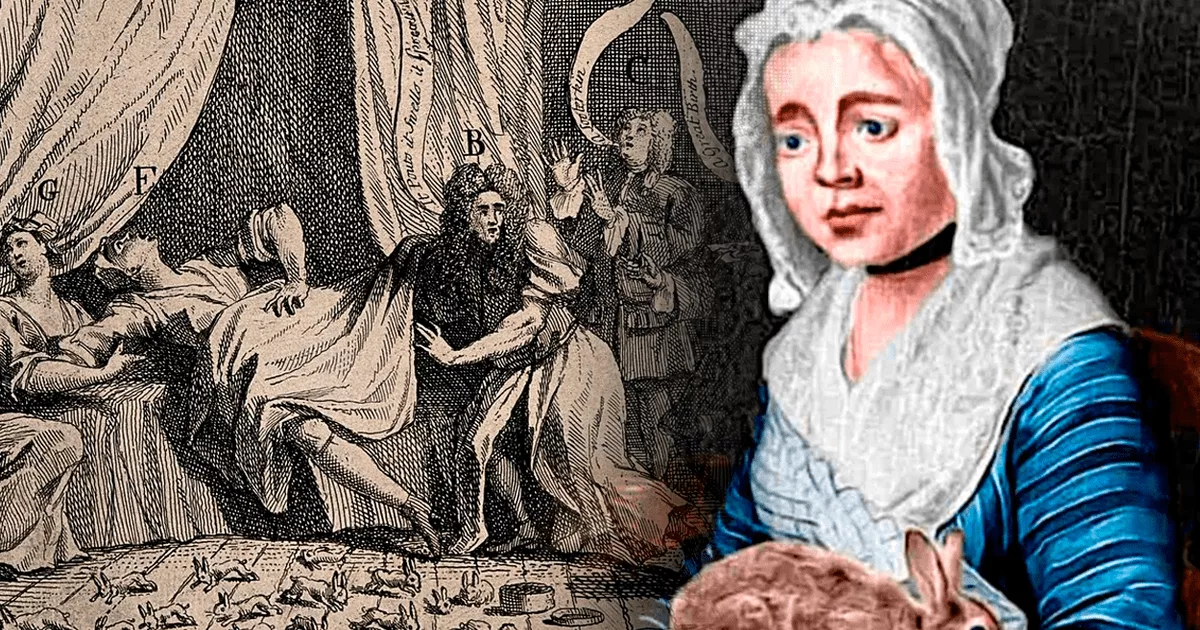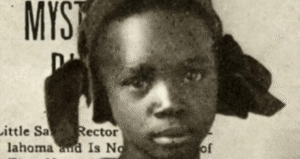In the annals of strange history, few stories are as bizarre — or as utterly baffling — as that of Mary Toft, the English woman who, in 1726, convinced doctors, clergymen, and even royalty that she was giving birth to rabbits. Yes, actual rabbits.
It sounds like a myth, the stuff of surreal satire or an absurd urban legend. But for weeks, highly educated men of medicine stood by her side, assisting in what they believed were the supernatural deliveries of animal parts and fully formed rabbits from a woman’s womb.
The tale of Mary Toft is not just a freak show of history. It’s a revealing window into the medical ignorance, class bias, and credulity of Enlightenment England — a time when science was advancing rapidly, yet superstition and spectacle still held powerful sway over even the sharpest minds.
Who Was Mary Toft?
Mary Toft was a poor 25-year-old woman from Godalming, Surrey, a small English town southwest of London. She lived a typical rural life — uneducated, working class, and married to a cloth worker. There was nothing particularly extraordinary about her before 1726.
But that year, she suffered a tragic miscarriage. Soon after, she began reporting strange sensations in her womb and later claimed she was in labor again — only this time, not with a human child.
When a local surgeon was summoned, he was stunned to discover parts of animals — specifically rabbits — being delivered from her body. What began as a grotesque curiosity soon became a full-blown national scandal.
The “Rabbit Births” Begin
It started quietly enough. After her miscarriage, Mary claimed she was still feeling pregnant. Then, in a supposed second labor, she expelled a liverless cat. Days later, it was rabbit parts. A few more days passed, and she delivered what looked like an entire baby rabbit.
This was shocking — not just for the midwives and neighbors who witnessed it, but for the surgeons who were called in to observe. Among the first was John Howard, a local man-midwife who became deeply invested in the case. Rather than assume trickery, Howard believed something unprecedented and medical was happening.
He wrote to other doctors, who came to observe Toft’s next deliveries. When she produced more rabbits, the word spread like wildfire.
Enter the Professionals: England’s Medical Elite Get Involved
Soon, the case caught the attention of Nathaniel St. André, surgeon to King George I. Fascinated, he traveled to Godalming and personally examined Mary. He, too, watched as she “delivered” several rabbits over multiple days.
St. André was no village quack. He was a respected member of the royal household, with experience and education. Yet he became completely convinced of the rabbit births’ authenticity.
He wrote detailed reports, performed anatomical analysis, and even presented the findings to the king himself, who authorized continued investigation.
Other doctors, including Cyriacus Ahlers, were more skeptical. Ahlers immediately suspected fraud, noting inconsistencies and signs of deceit. But his warnings were largely ignored at first — the sensational rabbit births were too good a story, and the reputation of powerful physicians was now at stake.
The Theory: Maternal Impressions
How could anyone believe a woman gave birth to rabbits?
One explanation lies in the now-debunked but once-popular theory of maternal impression. In the 18th century, it was believed that a pregnant woman’s thoughts, emotions, or visual experiences could physically shape the fetus in her womb.
The idea was that if a pregnant woman saw something disturbing — say, a rabbit — that image could “impress” itself onto the child she was carrying, leading to deformities, monstrosities, or animalistic features.
Mary Toft reportedly had an intense encounter with a rabbit shortly before her miscarriage. According to her and her midwives, she became obsessed with rabbits — craving them as food, dreaming about them, and being startled by them.
In the context of 18th-century beliefs, this background made the rabbit births plausible, at least to those inclined to trust the theory of maternal impressions.
The Public Frenzy
News of Mary Toft’s strange case spread throughout England. The press had a field day. Pamphlets were published. Satirical cartoons circulated. Crowds flocked to see the “rabbit woman.”
She was eventually moved to London, placed under constant medical observation. The king’s court, curious and amused, followed the developments closely.
Even the Tower of London’s menagerie (a sort of early zoo) became involved — the keepers were consulted to identify the rabbit species being birthed. The line between science, spectacle, and theater blurred completely.
For weeks, England was gripped by what was, in effect, an 18th-century medical circus.
The Hoax Unravels
Eventually, the truth came out.
Mary Toft was caught trying to sneak a rabbit into her room. Under intense interrogation, she confessed: the entire thing had been a hoax.
She had inserted rabbit parts into her vagina, often with the help of accomplices, to stage deliveries and convince the attending physicians. In some cases, the parts had been cut and stitched to look more convincing.
Her motivations were murky. Some say it was a desperate grab for attention or financial compensation. Others believe she was pressured by her family or her employer, who saw the hoax as a potential path out of poverty.
Regardless, the exposure of the hoax was a national embarrassment — not just for Toft, but for Britain’s entire medical establishment.
Fallout and Scandal
Once the truth came to light, the backlash was swift.
Mary Toft was imprisoned for fraud, though she was never formally tried and was eventually released. Her reputation was ruined. She returned to a life of obscurity and poverty, dying years later with the nickname “Rabbit Woman” still attached to her legacy.
But perhaps the biggest damage was to those who believed her. Nathaniel St. André, who had put his career and royal reputation behind the case, was humiliated. He tried to defend his actions in print, but his credibility never fully recovered.
The public — which had been swept up in the drama — now turned on the doctors and scientists, mocking them as gullible and foolish. The scandal highlighted the fragile boundary between science and spectacle, and how easily the powerful can be duped when pride and bias cloud judgment.
What the Toft Case Reveals
At first glance, Mary Toft’s hoax seems like a grotesque joke — a footnote in medical history best left as trivia. But the story is more meaningful than that. It reveals several key truths about the world of 18th-century England and, frankly, about human nature in any era.
1. Medicine Was Still Evolving
Though the Enlightenment was well underway, medical science was still primitive in many ways. Anatomical knowledge was limited. Superstition persisted. Dissections were rare, and hospitals were still places of last resort.
In this context, even well-trained doctors could be led astray by sensational claims, especially if those claims aligned with theories they already believed — like maternal impression.
2. Class and Gender Played a Role
Mary Toft was a poor woman in a rigidly classist society. Her story was only taken seriously because powerful men projected their own agendas onto it. Her body became a battleground for scientific curiosity, national attention, and male control.
At no point did anyone seriously consider her agency, her pain, or her mental state. She was either a miraculous specimen or a fraudster — never simply a person.
3. People Believe What They Want to Believe
Confirmation bias — the tendency to interpret evidence in a way that confirms one’s preconceptions — was alive and well in 1726. Once prominent physicians bought into the rabbit story, they ignored or rationalized anything that contradicted it.
This happens today too. From conspiracy theories to scientific denialism, we still see how belief can override evidence, especially when ego or reputation is on the line.
4. Public Fascination with the Strange Is Timeless
The story of Mary Toft also reminds us that the public has always been drawn to the bizarre. Long before social media, viral news, or clickbait, people lined up to see a woman who supposedly gave birth to rabbits.
Human curiosity, especially when mixed with scandal and shock, is a powerful thing.
A Legacy of Laughter and Lessons
In the centuries since, Mary Toft has become a symbol — sometimes of foolishness, sometimes of victimhood, sometimes of the strange dance between belief and biology.
She’s appeared in novels, plays, scholarly essays, and documentaries. Some modern feminists view her as an early example of a woman using her body to disrupt male authority. Others see her as a tragic figure crushed by poverty and desperation.
And still others just see her story as one of the most outlandish hoaxes in British history — a surreal moment when the medical elite knelt beside a peasant woman and pulled rabbits from her skirts.
Conclusion: Stranger Than Fiction, and Deadly Serious
Mary Toft’s story is funny. It’s absurd. But it’s also deeply revealing.
It shows how quickly science can be blinded by bias, how eager people are to believe the unbelievable, and how the human body — especially the female body — has long been a site of fascination, exploitation, and control.
Her tale reminds us that truth is often stranger than fiction, and that even the most bizarre hoaxes are born from very real places: grief, desperation, and a deep hunger to be seen.
In the end, Mary Toft didn’t really give birth to rabbits. But she did give birth to one of the most enduring cautionary tales in the history of medicine.




